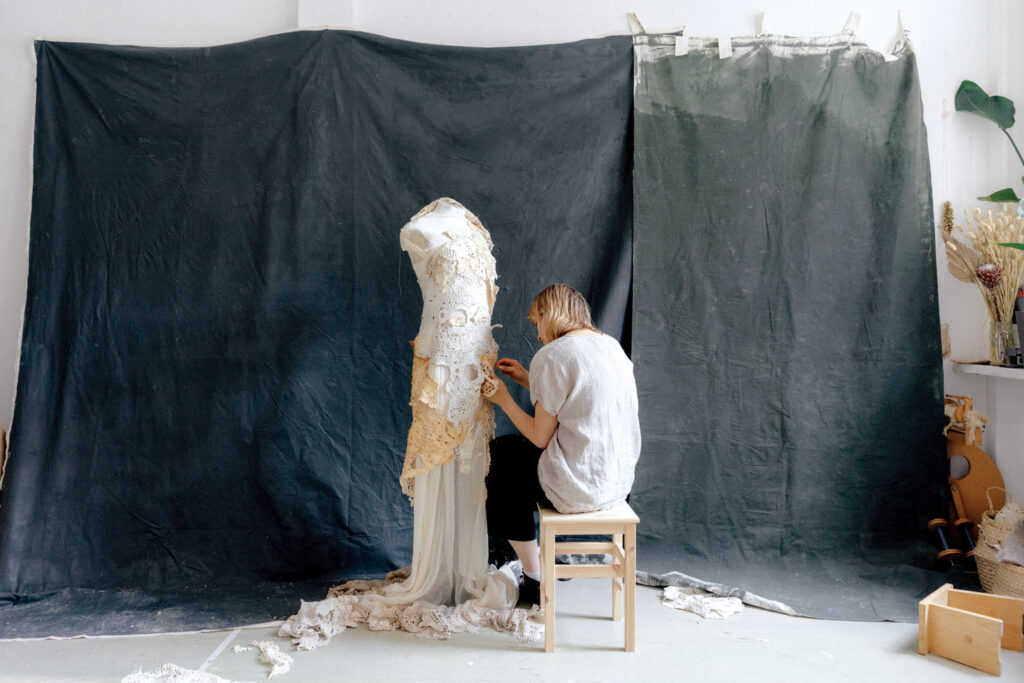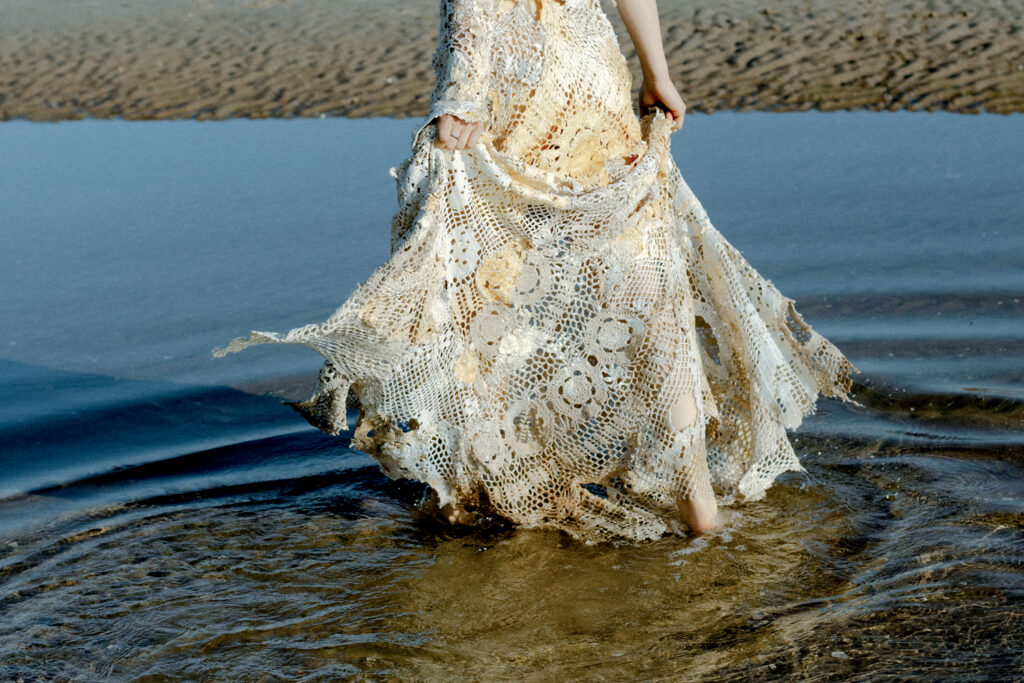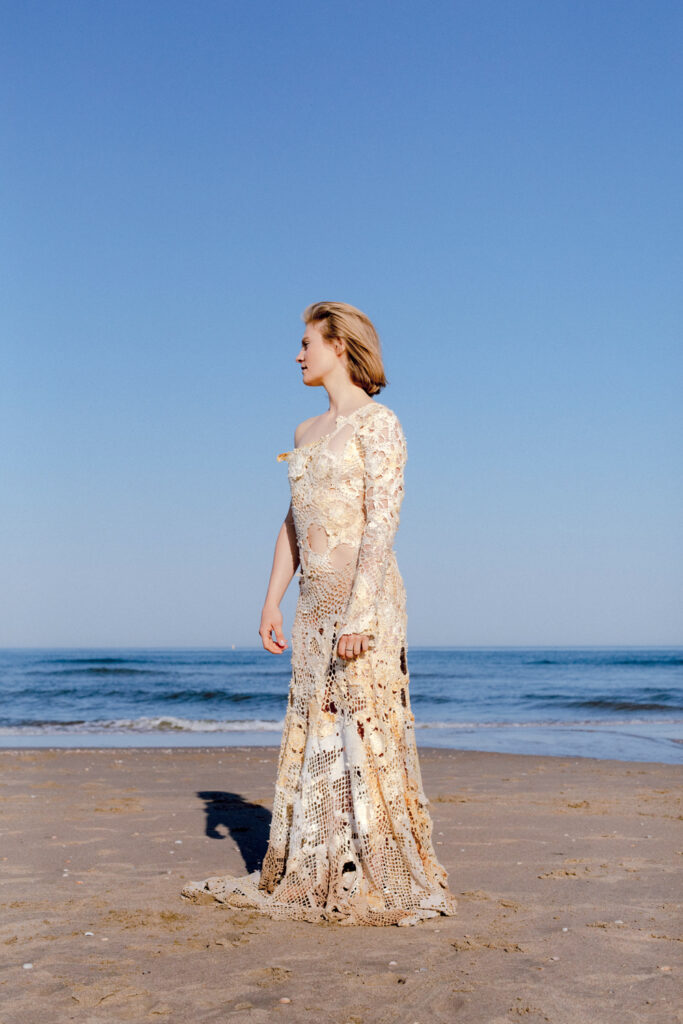
Dutch designer and researcher Dasha Tsapenko celebrated her wedding wearing a not-so-traditional gown—one made of vintage linen lace and mycelium, the rootlike structure of fungi.
In preparation for the project, Tsapenko traveled to Ukraine, her native country, to study ancient and modern wedding attire traditions. While there, she collected pieces of linen lace from markets and craft fairs that the mycelium could feed on.
“I wanted to combine something traditional and handmade with innovative biotechnology,” she says. “The growing process involved literally feeding the lace to the fungi by placing the deconstructed and sterilized lace pieces in a controlled, nutrient-rich environment and seeding them with spores.”

It took about two weeks for the main body of the dress to grow. The mycelium fused the lace fragments, creating a soft, solid fabric with an uneven texture and colors ranging from off-white to beige and brown. These colors are natural shades of mycelium and appear darker where the mycelium is denser.
On her wedding day, Tsapenko found that after getting the dress wet in seawater and being in damp sand, the material proved to be unchanged.
The dress is also biodegradable. Once the mycelium is removed from its controlled environment, it stops growing and stabilizes, but some individual spores may still be present, which can speed up the garment’s decomposition after use.

“The essence of such an item and its value lies in its uniqueness and temporality. A wedding is an emotional moment that you want to experience deeply. When that moment is over, you want to preserve it in your memory, not your closet,” Tsapenko says.
Tsapenko plans to establish a bio-atelier for growing couture garments on demand using mycelium and cellulose-based fibers or linen fabric or gauze.
 TEXTILES.ORG
TEXTILES.ORG


